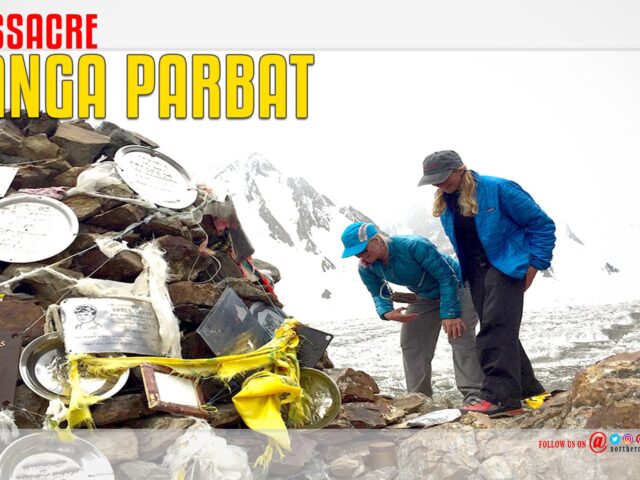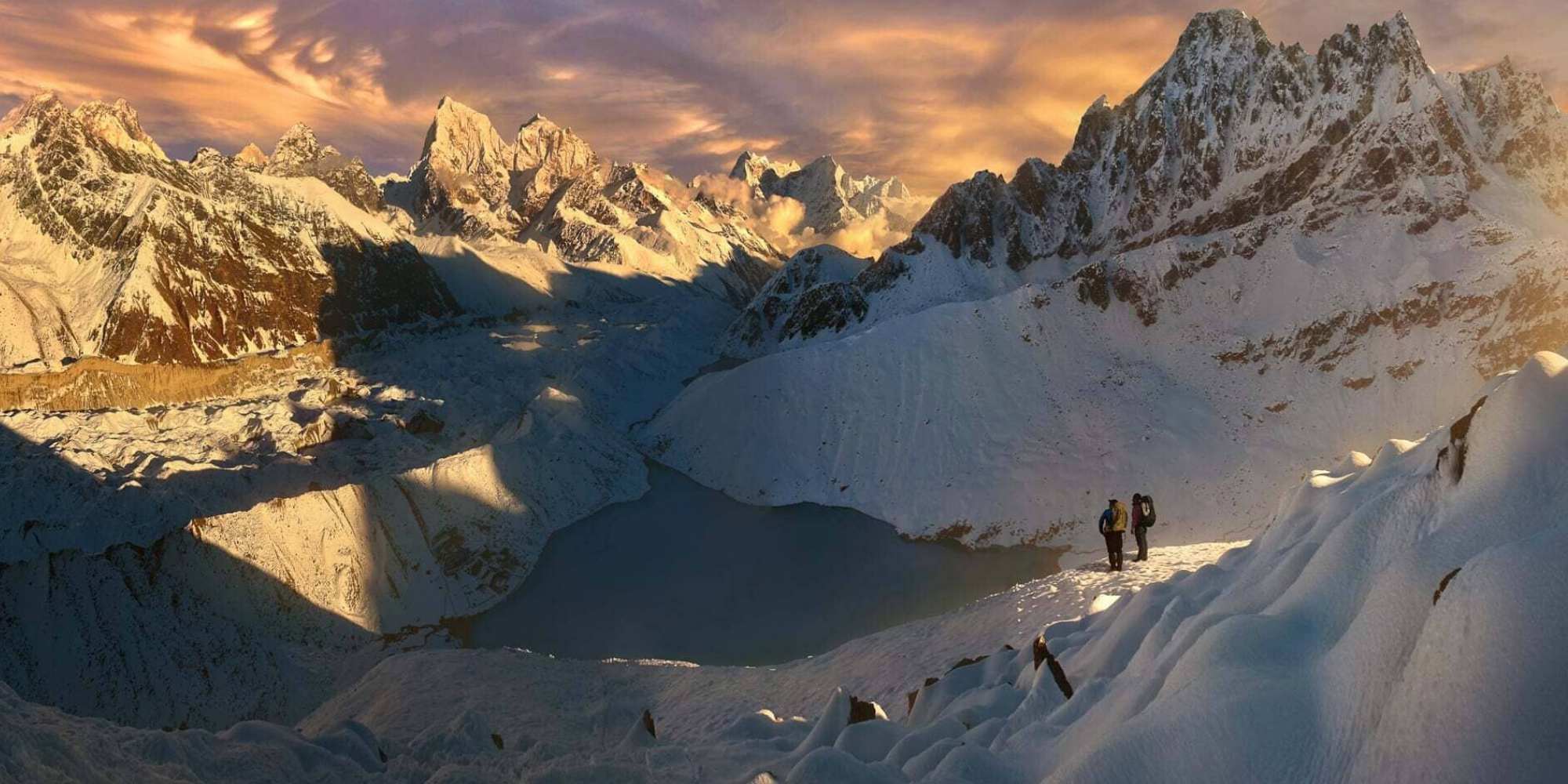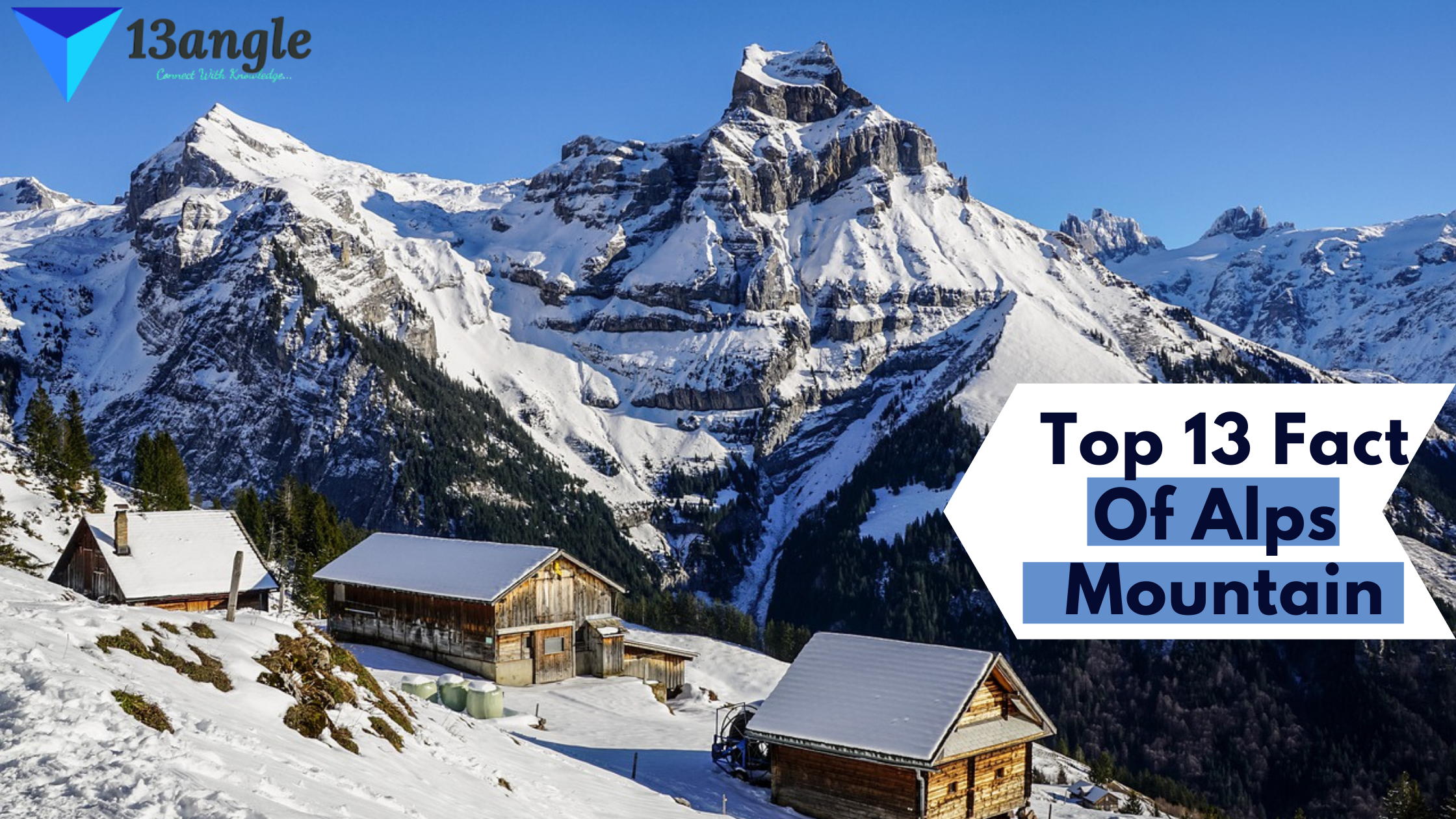
Nanga Parbat is the ninth highest mountain in the world. It belongs to the Himalayan Family. Nanga Parbat is situated in the Gilgit- Baltistan region of Pakistan. Its located at a height of 8126m (about 26,660 feet). As Nanga Parbat is located in Diamer District so locally it is known as Diamer. Nanga Parbat is also considered as the most deadliest mountain in the Himalayan Family. It is also called the ‘western anchor of the Himalayas’.
The name Nanga Parbat comes from the Sanskrit words ‘Nanga’ and ‘Parbata’ which means ‘naked mountain’. Nanga Parbat is also known as Deo Mir which means ‘huge mountain’.
There are total of 14 mountains in the Himalayan Range whose height is more than 8000 m and Nanga Parbat is one of the 14 Eight-thousanders.
Nanga Parbat lies South of the Indus River in Pakistan Administered Kashmir. It is situated close to the north face of Karakoram.
Nanga Parbat Notable Features :-

Nanga Parbat has a big vertical relief over local terrain in almost all directions. To the south, Nanga Parbat has what is often referred to as the highest mountain face in the world that is Rupal Face which rises 4,600 m (about 15,090 ft) above sea level.
To the north side, the complex, somewhat more gently sloped named Rakhiot Flank rises 7,000 m (about 23,000 ft) above the sea level from the Indus River valley to the summit in just 25 km (about 16 miles), And it is one of the ten greatest elevation gains in such a short distance on earth.
Nanga Parbat is one of the only two peaks on earth that rank in the top twenty highest mountain in the world and the most prominent mountain peak in the world, where Nanga Parbat is ranking ninth and fourteenth respectively.
The other mountain is the very famous and the highest mountain peak on mother earth i.e Sagarmatha/ Mount Everest (8848m) which ranks first on both the top twenty highest mountain in the world and the most prominent mountain peak.
Nanga Parbat is also considered the second hardest 8,000-meter peak after Mount Karakoram (Austin Godwin), the second-highest peak in the world, as well as one of the most dangerous peaks in the world.
After 31 people died attempting to scale Mount Nanga Parbat before its 1953 first ascent, it was also nicknamed “the Killer Mountain.”
Nanga Parbat is the third-most dangerous 8,000-meter peak with a death rate of 22.3 percent of climbers dying on the mountain.
By 2012, there were at least 68 climber deaths on Nanga Parbat.
Nanga Parbat is also the second most prominent peak of the Himalayas, after Mount Everest.
The lowest point for Nanga Parbat is Zoji la (where la means pass) in Kashmir, which connects it to higher peaks in the remaining Himalayan and Karakoram Range.
Nanga Parbat Layout :-


» The core of Nanga Parbat is a long ridge trending towards the southwest direction to the northeast direction. The ridge is composed of an enormous bulk of ice and rock. Nanga Parbat has three faces and is as follows:-
(1) The Diamir
(2) Rakhiot
(3) Rupal Faces
» The south-western portion of this main ridge is known as the Mazeno walls, and it also has a number of subsidiary peaks. while on the other side, the main ridge arcs northeast at Rakhiot Peak (7,070 m about 23,200 feet). The south/southeastern side of the mountain is basically dominated by the Rupal Face. The north/northwestern side of the mountain, which leads towards the Indus River, is very much complex. It is split into the Diamir (west) face and the Rakhiot (north) face by a long ridge. There are a number of subsidiary summits, including North Peak (7,816 m about 25,643 feet) around some three kilometers (1.9 miles) north of the main summit. Near the base of the Rupal Face is a glacial lake called Latbo, which is located above a seasonal shepherds’ village.
Nanga Parbat Climbing History :-

The first ascent was made on Nanga Parbat in the year 1953 by Hermann Buhl (The first winter ascent was made on 16 February 2016 by Simone Moro, Alex Txikon, and Ali Sadpara). Nanga Parbat was first climbed, via the Rakhiot Flank (East Ridge), on July 3, 1953, by an Austrian climber a member of a German- Austrian team. The expedition was organized by the half-brother of Willy Merkl, Karl Herrligkoffer from Munich, while the expedition leader was Peter Aschenbrenner, who had participated in the 1932 and 1934 attempts.
By the time of this expedition, 31 people had already died on the mountain. And made this mountain as the deadliest mountain.
The final push for the summit was very dramatic: Buhl continued alone for the final 1,300m (about4,300 feet) after his companions had turned back. Under the influence of the Drug, Padutin, and tea from coca leaves, he reached the summit dangerously late, at 1900 hours, the climbing harder and more time-consuming than he had anticipated. His descent was slowed when he lost a crampon and Caught by darkness, he was forced to stand upright on a narrow ledge, holding a small handhold with one single hand. He was very exhausted as he was dozed but managed to maintain his balance anyhow.
He was also very fortunate to have a calm night, so he was not subjected to wind chill. He finally reached his high camp at 1900 hours the next day, 40 hours after setting out. And the big thing was that ascent was made without oxygen, and Buhl is the only man to have made the first ascent of an 8,000-metre (about 26,000 ft) peak alone.
The attempts to summit Nanga Parbat began very soon after it was discovered by Europeans. In the year 1895, Albert Mummery who led an expedition to the peak, and reached almost 6,100 m (about 20,000 ft) on the Diamir (West) Face, but unfortunately Albert Mummery and his two other Gorkha companions died reconnoitering the Rakhiot Face.
In the year 1930, Nanga Parbat became the focus of German Mountaineers. The German mountaineers were unable to attempt the Highest Mountain in the world, Mount Everest since only the Britishers had access to the Tibet region. Initially, German efforts focused on Austin Godwin (the second-highest mountain in the world), to which Paul Bauer led two expeditions in the year 1930 and 1931, but with its long ridges and steep faces Austin Godwin was found much more difficult than Mount Everest and neither expedition made any progress. Austin Godwin considers as harder to scale still today, and its remoteness meant that even reaching its base would be a major success. Nanga Parbat was therefore the highest mountain accessible to Germans and was also deemed reasonably possible by climbers at the time.
The first German expedition to Nanga Parbat was led by W. Merkl in the year 1932. It is also referred to as a German-American expedition, as the eight climbers included. While the team all raw climbers, none had a Mountaineering experience in the Himalayas, and absolutely poor planning, coupled with bad weather, prevented the team from progressing far beyond the Rakhiot Peak northeastern face of the Nanga Parbat summit, reached by Peter and Herbert Kunigk, but they did establish the feasibility of a route via Rakhiot Peak and the main ridge.
Merkl led another expedition in the year 1934, which was well prepared and financed with full support from the new Nazi Government. Early in the expedition, Alfred Drexel died, likely due to high altitude sickness. The tyrolean climbers, Peter Aschenbrenner and Erwin Schneider reached an estimated height of 7,900 m (about 25,900 ft) but were forced to return because of bad weather. On July 7, they and 14 other mountaineers were trapped by a storm at 7,480 m (about 24,540 ft). During the desperate retreat that followed, three German mountaineers and six Sherpas died of exhaustion, exposure, and altitude sickness, and several others suffered severe frostbite. It has been said that the disaster, “for sheer protracted agony, has no parallel in climbing annals.”
In 1937, Karl Wein led another expedition to the mountain, following the same route as Merkl’s expeditions had done. Some Progress was made, but more slowly than before due to heavy snowfall. About 14 June, seven Germans and nine Sherpas, almost the entire team, were at Camp IV below Rakhiot Peak which was a great success but unfortunately, the whole team was overrun by an avalanche. All sixteen mountaineers died. The search team found that the tents had been buried by ice and snow rather than swept away. One of the victim’s diaries read “our situation here is not quite safe from avalanches”.
The Germans returned in 1938 led by Paul Bauer, but the expedition was plagued by bad weather, and Bauer, mindful of the previous disasters, ordered the party down before the Silver Saddle, halfway between Rakhiot Peak and Nanga Parbat summit, was reached.
» Aufschnaiter expedition :-
Heinrich Harrer, an expert alpinist, was a member of the Alpine unit. The unit practiced on Mount Eiger in Switzerland in the year 1938. When the group returned to Germany, Adolf Hitler met with them. In May 1939, Harrer was selected by the German Himalayan Mountaineering Foundation to take part in a new expedition to the Nanga Parbat, under the leadership of Peter Aufschnaiter. And their goal was to create new ways to ascend the north-western face. They explored the Diamir Face with the aim of finding an easier route. They concluded that the face was a viable route, but World War-2 intervened and the four men were captured by the Britishers in Dehradun, India. Harrer’s escape and subsequent wanderings across Tibet. Some evidence of this expedition is kept in the National Archives of Washington DC, USA.
In the year 1984 French climber Liliane Barrard became the first woman to summit Nanga Parbat.
In the year 2005, Americans Vince Anderson and Steve House climb the Central Pillar of the Rupal Face of Nanga Parbat in five days duration and then took two days to descend. Their alpine-style ascent is one the boldest Himalayan ascents till date. Steve House described this first ascent, “Summit day was physically one of the hardest days I have ever had in the mountains. We had climbed for five days with a very limited chance for recovery. Fortunately, the weather was perfect. But I was not sure that we would succeed until we arrived just below the south summit at over 8,000 meters and could see the last easy meters to the top.”
Nanga Parbat Assault Tragedy :-


An attack on June 23, 2013, at Nanga Parbat’s Base Camp by 15 to 20 Taliban terrorists dressed as Gilgit paramilitary officers like clothes killed 10 Mountaineers, including a Lithuanian, three Ukrainians, two Slovakians, two Chinese, a Chinese-American, a Nepali, a Sherpa guide, and a Pakistani cook, total 11 victims lost their lives in that attack. The attack occurred at around 1 am and was claimed by a local branch of the Taliban terror organization. The militants came in the night, rousing the climbers from their tents, then tying them up, taking their money, and shooting them one by one.
How To Make A Trip To Nanga Parbat :-

Nanga Parbat is one of the most beautiful Mountains in the Himalayan Family. And if you are planning a trip to Nanga Parbat then one thing is the promise for sure and that is an adventure and Fantastic view of beautiful nature.
Nanga Parbat is considered the most beautiful mountain in the Himalayas but just don’t go on its look. Nanga Parbat appears very beautiful from a distance but in reality, it is very tough, standing proud and mercy less. Every mistake gets punishment here. Neither it forgives anyone nor does love. And maybe that is the reason why Nanga Parbat is known as the Killer Mountain.
On the one side, it appears to be a very dangerous mountain while on the other side it provides one of the best views and those views are incredible. And besides risk maybe this is the reason why every year mountaineers from all over the world enroll themselves so that they scale this beautiful mountain.
Trip To Nanga Parbat :-
» There are many professional Institutes in Pakistan which provide trekking and tours to Nanga Parbat. Some of the best Mountaineering and Tours & Travel Institutes in Pakistan are as follows:-
(1) Apricot Tours Pakistan.
(2) Trango Adventures.
(3) Pakistan Alpine Institute.
(4) Shimsal Mountaineering School.
(5) Falcon Adventure Club.
» As different tour companies have different fees, rules, and norms for theirs. Here, we are providing basic details about how to plan a trip to Nanga Parbat.
STEP 1: You need to visit the official website of any good tour and travel organization that deals with providing a trip to Nanga Parbat.
STEP 2: As you make yourself registered there and make your payment then you will get to know the commencement date of the tour.
STEP 3: As your days are finalized then you need to make your bags ready.
STEP 4: As you reach the airport then all other accommodations will be taken care of by the concerned Tour & Travel Company.
Basic Overview Of The Trip Provided Common By All T&t Organisations Are As Follows:-
Nanga Parbat expedition offers Fantastic mountain views.
Amazing View of Indus River & Karakoram Highway.
World’s Best Adventure to the Himalayan Mountains.
Sightseeing.
Stunning wild scenery Trek to Nanga Parbat Base Camp.
Program Will Be Something Like :-
Generally trip begins from Chillas Karakoram highway in a bus.
Another day tour headed towards Fairy Meadows.
Kachal (provides one of the best views of Nanga Parbat).
Alpine forest (trek becomes more impressive).
Base Camp of Mighty Nanga Parbat.
T&T provides camping there.
Back to Kachal.
Trek and Headed towards Chillas
Back to home
Program Will Be Something Like :-
Trip to Nanga Parbat is generally 43 to 47 days.
The average fee for full service is around $21,500 USD to $25,500USD.
Foods, camping, etc, are included in the fees.
Additional Information :-
Confirmation of the Tour will be received at the time of booking.
Not Recommended for Travellers with back problems.
No Heart Problem or Any serious Medical Conditions.
Travellers should have moderate physical fitness.
NOTE:- For Tour & Travel in any part of Pakistan, you can seek help from Tripadvisor .
Top 13 Intresting Facts About Mount Nanga Parbat

» Some of the top 13 facts about Nanga Parbat are as follows :-
(1) Nanga Parbat is the second-highest mountain in Pakistan. It is in the Gilgit-Baltistan region. Nanga Parbat means “Naked Mountain”. It is the ninth highest peak in the world, at 26,660 feet (8,130 m) high. In 1953, an Austrian- German named Hermann Buhl was the first to climb it.
(2) Nanga Parbat is the highest peak in the Nanga Parbat Range. The range covers an area of 120 mi (190 km) in length and 12 to 24 mi (19 to 39 km) in width. In the east, it joins the Pir Panjal range.
(3) It is the highest peak in the Nanga Parbat Range. This mountain has three major faces which are:- Rupal, Rakhiot, and Diamir. Rupal Face is the world’s highest mountain face as it rises 4,600 meters from its base to the mountain’s summit.
(4) The first successful ascent on this mountain was made by Hermann Buhl on July 3, 1953. It was a solo climb and without any oxygen cylinder.
(5) Nanga Parbat also is known as ‘Killer Mountain’ because 31 people died attempting to climb it before the first successful ascent.
(6) Nanga Parbat lies just south of the Indus River, in the Astore District of the Northern Areas in Kashmir.
(7) Nanga Parbat has tremendous vertical relief over local terrain in all directions. To the south, Nanga Parbat has what is often referred to as the highest mountain face in the world: the Rupal Face rises 4,600 m (15,090 ft) above its base
(8) Nanga Parbat is located in Diamer District so locally it is known as Diamer. Nanga Parbat is also the second most prominent peak of the Himalayas, after Mount Everest.
(9) Nanga Parbat is also considered as the most deadliest mountain in the Himalayan Family. It is also called the ‘western anchor of the Himalayas.
(10) The Rupal Face of Nanga Parbat is considered the world’s highest mountain face, rising about 15,090 feet (4,600 meters) from its base to the icy summit of Nanga Parbat.
(11) Nanga Parbat is considered the second-hardest 8,000-meter peak after Godwin Austin (the second-highest peak in the world, as well as one of the most dangerous.
(12) Nanga Parbat is the third most dangerous 8,000-meter peak with a death rate of 22.3 percent of climbers dying on the mountain.
(13) Nanga Parbat is the ninth highest mountain peak in the world but climbing is more harder than the Highest Mountain in the world i.e Mount Everest. It is also considered as the most deadliest mountain peak in the world. Nanga Parbat is one of the only two peaks on earth that rank in the top twenty highest mountain in the world and the most prominent mountain peak in the world, where Nanga Parbat is ranking ninth and fourteenth respectively.
-: Conclusion :-

Nanga Parbat is considered the most beautiful mountain in the Himalayas but just don’t go on its look. Nanga Parbat appears very beautiful from a distance but in reality, it is very tough, standing proud and mercy less. Every mistake gets punishment here. Neither it forgives anyone nor does love. And maybe that is the reason why Nanga Parbat is known as the Killer Mountain.
On the one side, it appears to be a very dangerous mountain while on the other side it provides one of the best views and for adventure seekers, it is like heaven and those views are just incredible. And besides risk maybe this is the reason why every year mountaineers from all over the world enroll themselves so that they scale this beautiful mountain and make their name in history.
Nanga Parbat is the only eight-thousanders in Pakistan which lie in the Himalayan Range because all other falls in Karakoram Range. It is located in the Gilgit-Baltistan region in Pakistan. And also called ‘Savage Mountain’.
» Besides beauty and adventure Nanga Parbat as a mountain gives us some greatest life lessons also. And are as follows:-
(1) Winning on our fears: The steep cliffs, the forbidding peaks, and the deadly cold storms that blow at the mountain, fear of frostbite and oxygen are just some of the things that one stands barely exposed to when in the mountains. But, once you overcome these obstacles then there’s nothing as exhilarating as that moment.
(2) Hard Work Always Pays: Climbing a deadly mountain like Nanga Parbat is like unpredictable battling with the weather. But the views from the top and the satisfaction of the moment really pay off.
(3) Attitude: There are times when people along with you (group) struggling hard to climb Nanga Parbat and suddenly due to avalanche many of your group members lost their lives and it causes huge de-motivation in you but at that hard time that’s your positive behavior which motivates you to move ahead. And it’s always said that “your attitude decides your altitude”.
There are many lessons that one can learn from Nanga Parbat but at last, everything depends upon our own attitude because one can only teach us but it is our attitude that how we take those things.





